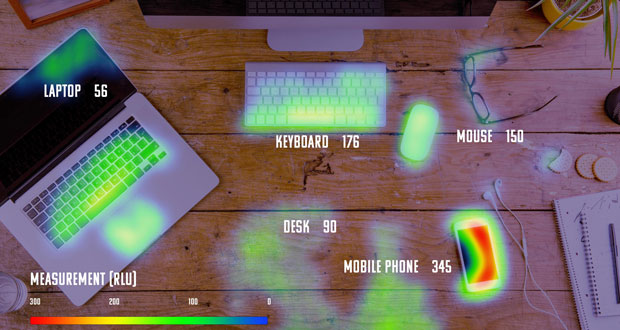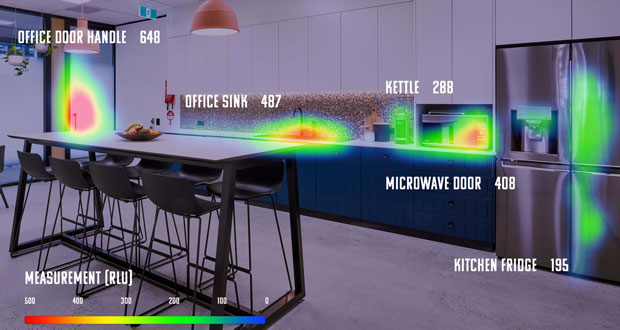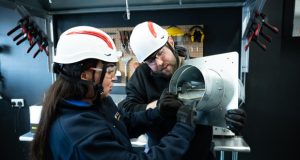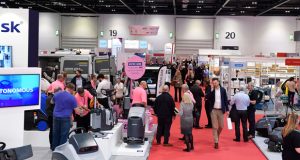Some areas of the average office can carry several hundred different contaminants and bacteria in just 10cm², according to new research from office furniture suppliers Furniture at Work.
The research, in which Furniture at Work used a hygiene system commonly used in professional health environments, tested several areas of a busy office in order to discover the amount of relative light units (RLU), something that can be directly correlated with the number of contaminants and bacteria in an area.
The area with the highest RLU reading was the door handle into the office, which came in at a reading of 648 RLU. This was followed by the office sink at 487 RLU and the microwave door at 408. To put these numbers in perspective, a test on the mobile phone of a member of staff gave a reading of 345 RLU and a test on a toilet seat produced a result of just 21 RLU.
The areas with the highest RLU are as follows:
|
Area |
Measurement (RLU) |
|
648 |
|
487 |
|
408 |
|
345 |
|
288 |
|
239 |
|
222 |
|
195 |
|
193 |
|
176 |
As Covid-19 restrictions are lifted across the country and employees take their first steps towards a return to the office, the results show that some of the most commonly used areas in the office can be a higher risk than many may have thought.
There is some good news however, when testing the personal computer equipment, results were comparatively much lower. A laptop only measured 56 RLU, and a mouse 150 RLU. A kitchen table only scored 2 RLU and a desktop 90 RLU, showing that cleaning procedures in these common areas are doing a good job of reducing the number of contaminants.

A spokesperson from Furniture at Work commented on the findings: “As workers prepare to return to the office, many potentially with a feeling of trepidation, our research has helped to highlight the areas where employers must work hard to maintain hygiene and employees should be extra careful. The fact that a toilet seat carries 30 times less bacteria than a door handle proves why hand hygiene is still so important.
“Even if we’re not just considering the risk of Covid-19, maintaining high standards of cleanliness is now more important than ever. These results should provide a good benchmark for employers and help reduce the chances of infection when back in the office.”
Abbas Kanani, a pharmacist at Chemist Click also commented on the findings: “The typical hotspots for bacteria are where you would expect, such as kettles, door handles, fridges and toilets. If you have a lift in your office, the lift buttons are likely to contain large amounts of bacteria, as people wouldn’t typically wash their hands before entering the lift before reaching the office. Hotdesking is common in offices in recent times, so telephones and keyboards are also likely to harbour bacteria. However, recent times have seen our priorities change, and with the risk of Covid, there should be extra precautions in place.”
To read the full Bacteria In The Office blog click here.





